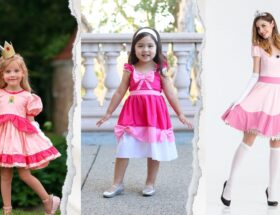Defining Culture:
Culture encompasses the shared values, beliefs, norms, and practices that characterize a community.
In the words of renowned anthropologist Clifford Geertz, it is “a system of inherited conceptions expressed in symbolic forms by means of which people communicate, perpetuate, and develop knowledge about and attitudes toward life.”
Building Blocks of Culture:
Cultures consist of both tangible and intangible elements, including artifacts, aesthetics, patterns, motifs, symbols, and shared values and belief systems.
Sociologist Émile Durkheim likens culture to “collective representations,” contributing to the unique identity of a community, much like threads in a fabric.
Beliefs and Symbols:
Belief systems, whether religious, philosophical, or ideological, shape a community’s worldview.
Symbols such as flags, religious motifs, artistic patterns, and 80’s fashion styles serve to unify individuals under a common identity.
For example, the Bald Eagle holds profound significance in American culture, representing freedom and strength.
Practices and Rituals:
Recurring practices and rituals strengthen community cohesion.
The Japanese tea ceremony, marked by meticulous choreography and symbolism, holds essential significance in Japanese culture.
Transmission and Change:
Culture is dynamic, evolving through internal transformations and external influences.
Marshall McLuhan‘s “global village” concept illustrates how technological advances in communication facilitate the widespread transmission of cultural elements.
Essential cultural elements, including artifacts, aesthetics, patterns, motifs, and symbols, permeate various segments, from architecture to art and clothing manufacturing.
Acculturation and Assimilation:
Acculturation involves the blending of distinct cultures into a new, hybrid form.
Assimilation, on the other hand, describes the absorption of one culture into another, often resulting in the loss of original cultural markers.
The fashion industry serves as a prominent example of acculturation and assimilation, as designers create garments, footwear, and accessories that reflect a fusion of cultural influences.
In Conclusion:
Culture is a complex tapestry woven from shared values, beliefs, norms, and practices, collectively shaping a community.
It is a continually evolving entity, susceptible to transformations from both internal dynamics and external influences.








